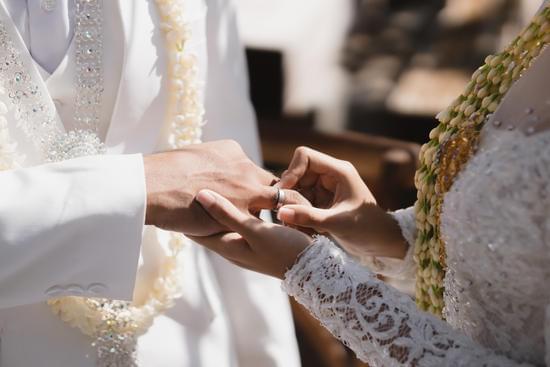Are you wondering how to address a wedding invitation for a plus one? Understanding the etiquette of this practice is crucial in ensuring that every guest feels welcomed and included on your special day. Whether you’re following traditional formalities or looking for more modern and inclusive alternatives, it’s important to consider the feelings and needs of your guests when extending a plus one invitation.
In this article, we will delve into the concept of plus ones, who should receive them, and the traditional and contemporary ways to address wedding invitations for a plus one. We will also discuss how to personalize the invitation, overcome potential challenges, and handle RSVP and meal preferences for plus ones. By the end of this piece, you will have a comprehensive understanding of addressing wedding invitations for plus ones and the significance of inclusivity in wedding etiquette.
Whether you’re a bride-to-be, a groom planning your big day, or a guest navigating a wedding invite with a plus one option, this guide will provide valuable insights into handling this aspect of wedding etiquette with grace and consideration. So let’s dive in and explore the world of addressing wedding invitations for plus ones.
What Is a Plus One and Who Should Receive One
A plus one refers to the option given to a wedding guest to bring a date or companion to the event. This is typically extended to guests who are in a committed relationship, whether married, engaged, or in a long-term partnership.
In some cases, single guests may also be given the option to bring a friend or family member as their plus one. The decision of who should receive a plus one ultimately lies with the couple getting married, and it usually depends on various factors such as budget, venue capacity, and the intimacy of the event.
It is important to remember that not every guest is entitled to a plus one. As couples plan their guest list, they should carefully consider whom they will extend this courtesy to in order to avoid any misunderstandings or conflicts.
Close family members and friends who are in serious relationships or are known for being in long-standing partnerships should be at the top of the list when it comes to receiving a plus one invitation. However, it is not obligatory for all wedding guests, especially those who are more distantly related or acquaintances.
When deciding on who should be granted a plus one invitation, couples can take into consideration how long the couple has been together and how involved they are in each other’s lives. It’s also important for couples to establish clear guidelines early on so that there is no confusion among their guests about whether they can bring someone else along with them.
| Plus One Recipient | Considerations |
|---|---|
| Close Family Members and Friends | In serious relationships or long-term partnerships |
| Distant Relatives and Acquaintances | Not obligatory for all wedding guests |
| All Guests | Clear guidelines should be established early on |
Traditional Wording for Addressing a Plus One
When it comes to addressing wedding invitations for plus ones, there are traditional and formal ways to handle this etiquette. The term “plus one” refers to the invitation of a guest’s date, partner, or significant other. It is important to understand who should receive a plus one when creating your wedding guest list. Typically, if a guest is in a long-term relationship, engaged, or married, they should be offered a plus one on their invitation.
In traditional wedding invitation wording, the plus one is addressed by including “and Guest” after the recipient’s name. For example, “John Smith and Guest” would indicate that John is invited with a guest of his choosing. This formal approach ensures that the recipient understands that they have the option to bring someone along with them to the wedding.
While traditional wording may seem outdated to some couples, it is still considered proper etiquette in many circles. It allows guests to understand who is invited and how they can include their chosen companion on their RSVP. Additionally, using traditional wording can set the tone for a more formal wedding event.
Modern Alternatives for Addressing a Plus One
When it comes to addressing a wedding invitation for a plus one, it’s important to consider more contemporary and inclusive alternatives. In today’s ever-changing society, traditional wording may not always fit the bill for all couples and their guests. Here are some modern alternatives to consider when addressing wedding invitations for plus ones.
Using “And Guest”
One modern alternative for addressing a plus one on a wedding invitation is simply using the phrase “and Guest” after the invited guest’s name. This provides flexibility for the invited guest to bring a date or a friend of their choosing without having to specify someone’s name.
Non-Gender-Specific Language
Another modern approach is to use non-gender-specific language when addressing a plus one. Instead of assuming the invited guest will bring a romantic partner, using phrases like “plus one” or “guest” can encompass any type of companion the guest chooses to bring.
Customizing Invitations
Creating customized or personalized invitations is another way to address a plus one in a more modern and inclusive manner. This can involve designing an RSVP card that includes options for meal preferences and attending as an individual or with a guest, allowing the invited guest to express their preferences in an open and welcoming way.
By considering these modern alternatives, couples can ensure that they are being as inclusive as possible when addressing wedding invitations for plus ones. It also demonstrates respect for each individual guest’s personal circumstances and choices, ultimately leading to a more enjoyable and accommodating wedding experience for all involved.
Personalizing the Plus One Invitation
When it comes to addressing a wedding invitation for a plus one, it’s important to make the invited guest feel welcome and included. Personalizing the plus one invitation can go a long way in ensuring that they feel like a valued part of the wedding celebration. Here are some tips on how to personalize the invitation for the plus one.
Addressing by Name
One of the simplest ways to personalize a plus one invitation is by addressing it to the specific individual who is being invited as the guest’s “plus one.” Instead of simply writing “and Guest” on the envelope, take the time to find out the name of your guest’s companion and address the invitation to both individuals.
This shows that you have taken the time to acknowledge their presence and make them feel like a true part of the wedding celebration.
Including Both Names on RSVP
In addition to addressing the invitation by name, you should also include both names on the RSVP card. This not only helps in keeping track of who will be attending but also reinforces that both individuals are welcome at your wedding. It also allows for proper seating arrangements and meal preferences for both individuals, ensuring that everyone feels accommodated.
Adding Personal Notes
Another way to personalize an invitation for a plus one is by adding a personal note alongside the formal invite. This can be as simple as including a handwritten message expressing excitement at having both individuals present at your wedding. Personal touches like these can make all the difference in making your guests feel valued and included.
By personalizing the invitation for the plus one, you are not only demonstrating thoughtfulness but also showing that you value inclusivity and want all guests, including plus ones, to feel welcome and cherished at your special day.
Potential Challenges and How to Overcome Them
When addressing wedding invitations for plus ones, there are potential challenges that may arise, but with the right approach, these challenges can be overcome. Here are some common issues that may come up when inviting a plus one and suggestions on how to handle them:
1. Budget constraints: One of the challenges in inviting a plus one is the additional cost that comes with accommodating extra guests. To address this challenge, couples can consider setting a clear guest list criteria and sticking to it. If budget allows, they can opt for a tiered guest list, where certain guests are given the option of bringing a plus one based on their relationship status or other relevant factors.
2. Limited space at the venue: Another challenge is limited space at the wedding venue, especially if it’s an intimate affair. In this case, couples can prioritize giving plus ones to married or engaged guests as well as those in long-term relationships. They can also consider having a waiting list for plus ones in case there are cancellations closer to the event.
3. Unwanted or unfamiliar plus ones: There may be instances where couples are faced with the dilemma of inviting a plus one who is unfamiliar to them or someone they do not necessarily want at their wedding.
To address this challenge, it’s important for couples to have open and honest conversations with their guests about the limitations and considerations for a plus one invitation. They can kindly explain that due to space or budget constraints, they are unable to accommodate additional guests who do not meet specific criteria.
By being transparent about their decision-making process and setting clear guidelines for plus ones, couples can navigate these potential challenges effectively and ensure a smooth and inclusive experience for all their wedding guests.
RSVP and Meal Preferences for Plus Ones
When addressing wedding invitations for plus ones, it’s important to consider the RSVP and meal preferences for these guests. Here are some tips on how to handle these details with tact and consideration:
- Clear RSVP Instructions: When sending out the wedding invitations, make sure to include clear instructions for the plus one guest to RSVP. This can be done by including a separate line for their name on the response card, or by indicating that they can RSVP online or through a designated phone number or email address.
- Meal Preference Options: If your wedding reception includes a sit-down meal with meal options (such as vegetarian, gluten-free, etc.), it’s courteous to also include these options for the plus one guest. You can do this by adding a line on the response card where they can indicate their meal preference, or by contacting them directly to ask about their dietary needs.
- Managing Seating Arrangements: Once you have received the RSVP from the plus one guest, it’s important to consider seating arrangements at the reception. Ensure that they are seated together with their invited guest, and take into account any preferences or special considerations they may have when assigning seating.
Addressing the RSVP and meal preferences for plus ones is an essential part of making them feel welcome and included in the wedding celebration. By providing clear instructions and considering their individual needs, you can ensure that both your invited guests and their plus ones feel valued and respected.
Remember that communication is key when handling these details – be open to accommodating any specific requirements or requests from the plus one guest, and make sure to convey this inclusivity through your wedding invitation. With thoughtful consideration, you can successfully manage RSVP and meal preferences for plus ones while creating an atmosphere of warmth and hospitality at your wedding celebration.
Conclusion
In conclusion, understanding the etiquette of addressing wedding invitations for plus ones is a crucial aspect of planning a wedding. As discussed throughout this article, the concept of a plus one and who should receive one has evolved over time, with both traditional and modern alternatives for addressing a plus one now being widely accepted.
It’s important to remember that the purpose of including a plus one is to ensure that all guests feel welcomed and included in the celebration.
Addressing a wedding invitation for a plus one can be done in various ways, from using traditional wording to more personalized approaches that make the guest feel truly included. Ultimately, the goal is to ensure that the plus one feels just as much a part of the celebration as the primary invitee.
By discussing potential challenges that may arise when inviting a plus one, such as not knowing their name or preferences, couples can proactively plan and provide solutions, making the process smoother for both themselves and their guests.
Inclusivity in wedding etiquette is essential, and considering how to address a wedding invitation for a plus one is just one way to demonstrate this value. When each guest feels welcomed and valued, it contributes to creating an inclusive and joyful atmosphere at the wedding. It’s important for couples to consider these aspects of invitation etiquette as they plan their special day, ensuring that every guest – including their plus ones – feels genuinely appreciated and celebrated.
Frequently Asked Questions
How Do You Address a Wedding Invitation to Someone and Guest?
When addressing a wedding invitation to someone and their guest, it’s important to include both names on the envelope. You can write “Mr. John Smith and Guest” or “Ms. Jane Doe and Guest” to indicate that they are allowed to bring a companion.
How Do You Politely Ask for a Plus One at a Wedding?
If you want to ask for a plus one at a wedding, the best way is to directly communicate with the couple getting married. It’s polite to express your desire to bring a guest for company and explain your reasons for needing a plus one.
How Do You Write Plus One on RSVP?
When writing “plus one” on an RSVP, simply include a line where the guest can write in the name of their intended companion. This gives them the opportunity to inform the couple about who will be accompanying them without explicitly stating “plus one” on the response card.

I have been involved in marriages for over 20 years helping couples and singles understand more about them.





